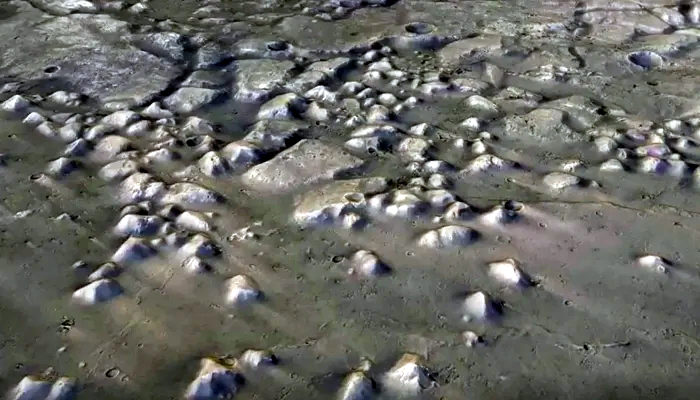Scientists Unveil Mystery Behind Mars’ Mysterious Mounds, Indicating Ancient Water Presence

Scientists have made a significant breakthrough in understanding one of Mars’ biggest mysteries – the formation of thousands of strange mounds on the planet’s surface. These mounds, which span both the northern and southern hemispheres of Mars, are now believed to be remnants of ancient water flow, suggesting that the red planet once harbored liquid water.
Over 15,000 mounds, located in the *Chryse Planitia* region of Mars, have long baffled researchers. For years, scientists could not explain how these unique features came to be. However, after detailed images captured by NASA and the European Space Agency’s Mars orbiters, researchers have made a breakthrough. A new study, published in *Nature Geoscience*, has shed light on the origins of these mounds.
The study suggests that these mounds could be the last remnants of a once larger plateau shaped by ancient water flows billions of years ago. Researchers have determined that water was present both on the surface and below Mars’ surface at that time, leading to the formation of these mounds. Over time, water erosion gradually altered the landscape, leaving the current mound structures.
**Future Exploration**
The study also hints at the potential for future missions to Mars, with the European Space Agency planning to send a rover to the region by 2028. The rover’s mission will likely include further investigation of these mounds, offering a deeper understanding of Mars’ ancient history and water presence.
**Investigative Process**
To reach these conclusions, researchers meticulously analyzed high-definition images of the mounds. Though the mounds appeared similar from a distance, closer inspection revealed significant structural differences. The study confirms that these mounds are most likely the remnants of an ancient plateau that was gradually shaped by flowing water, indicating a wetter and more dynamic Martian past.
**Implications for Mars’ History**
This new finding marks an important step in unraveling Mars’ history, offering compelling evidence that water played a significant role in shaping the planet. Further investigations of these mounds could provide vital insights into the planet’s past climate and the potential for ancient life on Mars.





